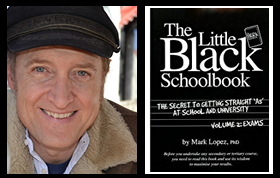Dr Mark’s The Meaning in a Nutshell
Daryl Tonkin, Jackson’s Track (1999)
Daryl Tonkin’s memoir Jackson’s Track (1999) was written with significant assistance from Carolyn London. It is set in the Gippsland forest in Victoria and it tells the story of a white Australian man (Tonkin) who ran a timber mill and married a local Aboriginal woman and lived in harmony in the bush with the local Aborigines up Jackson’s Track. The memoir is meant to be a historical document that sheds light on Australian social history while promoting the cause of Aboriginal reconciliation. The memoir is intended to promote greater understanding and sympathy for Aboriginal people while countering widespread negative perceptions. Since Daryl Tonkin lived for decades with a rural Aboriginal community he is presented in the text as speaking with the authority of first-hand experience in his countering of these negative perceptions.
The memoir tells the story of the kind of pioneering spirit that built Australia while, more significantly, commenting on race relations between the whites and Aborigines, criticising the racism of mainstream Australian society while highlighting the destructive impact on the Aborigines of the government policies intended to assist them. The memoir offers an alternative policy model to promote Aboriginal welfare in the form of the thriving Jackson’s Track community, where white people were not judgemental and adopted more of the Aboriginal ways of living rather than the other way around. The memoir also presents the racism of many whites towards Aborigines as based on ignorance and misunderstanding.
The memoir comments on significant issues involved in the campaign for reconciliation. This includes a broad condemnation of the assimilationist approach to Aboriginal welfare that was prevalent before the 1970s. In this context, the memoir pays considerable attention to the suffering of Aborigines due to the impact of the government policies accused of creating what have been referred to as the ‘stolen generations’. This involved white welfare authorities taking mixed-race Aboriginal children from their Aboriginal families to be raised elsewhere for what was understood to be for their own benefit. At the time the book was written, the stolen generations had emerged as a major issue of historical and political debate that was used to attack the Coalition government of Prime Minister John Howard. The Howard Government had questioned the credibility and potential effectiveness of the policies advocated by the Human Rights and Equal Opportunity Commission’s report into the stolen generations, Bringing Them Home (1997).
In addition to its principal themes regarding race relations, the memoir promotes values associated with the ideology of individualism, treating them as ingredients for personal success. Most of these qualities were associated with the bushman’s ethos that contributed to the establishment of the version of the Australian national identity that emerged and was prominent in the late nineteenth century and early twentieth century.
Student resources by Dr Mark Lopez
© Mark Lopez 2021 All RIGHTS RESERVED
The purpose of the concise notes of Dr Mark’s The Meaning in a Nutshell is to provide much needed help to students seeking to unlock the meaning of the texts with which they have to deal. (More elaborate notes are provided in lessons as part of my private tutoring business.)
Subject: Jackson’s Track meaning, Jackson’s Track themes, Jackson’s Track analysis, Jackson’s Track notes
